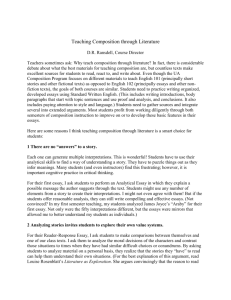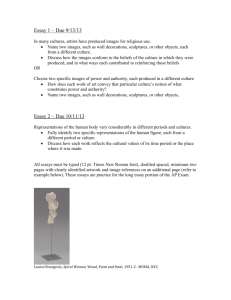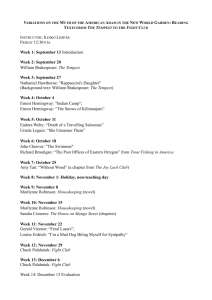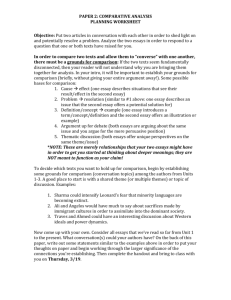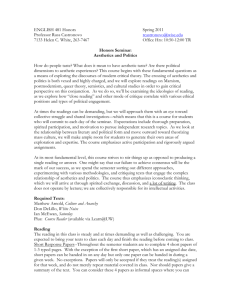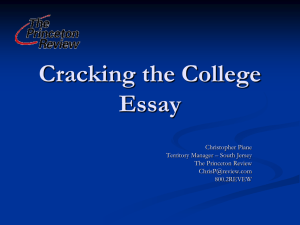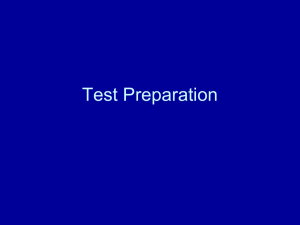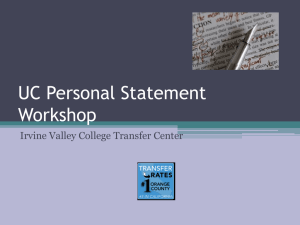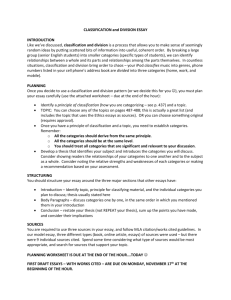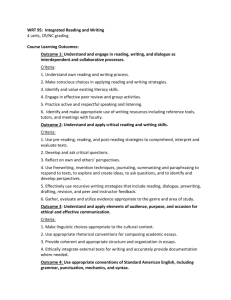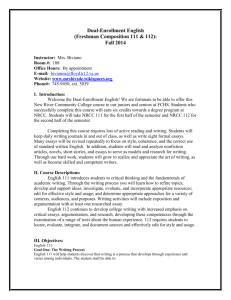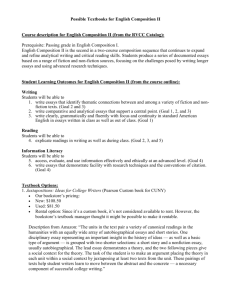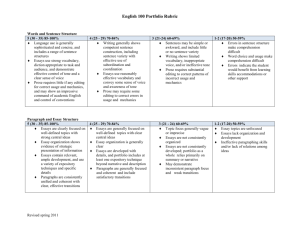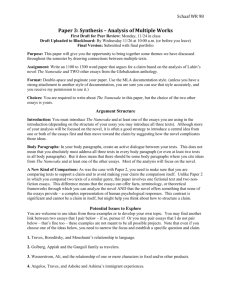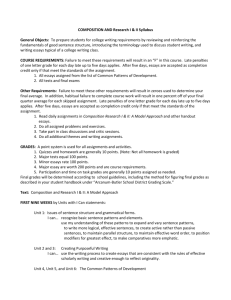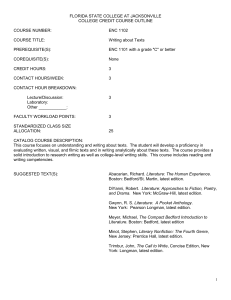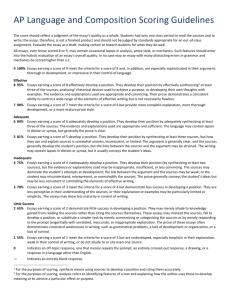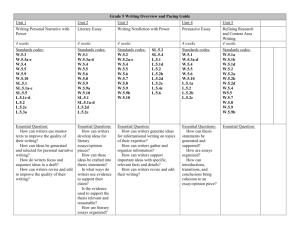eng 110 paper topics 2 - eng 110.1809
advertisement
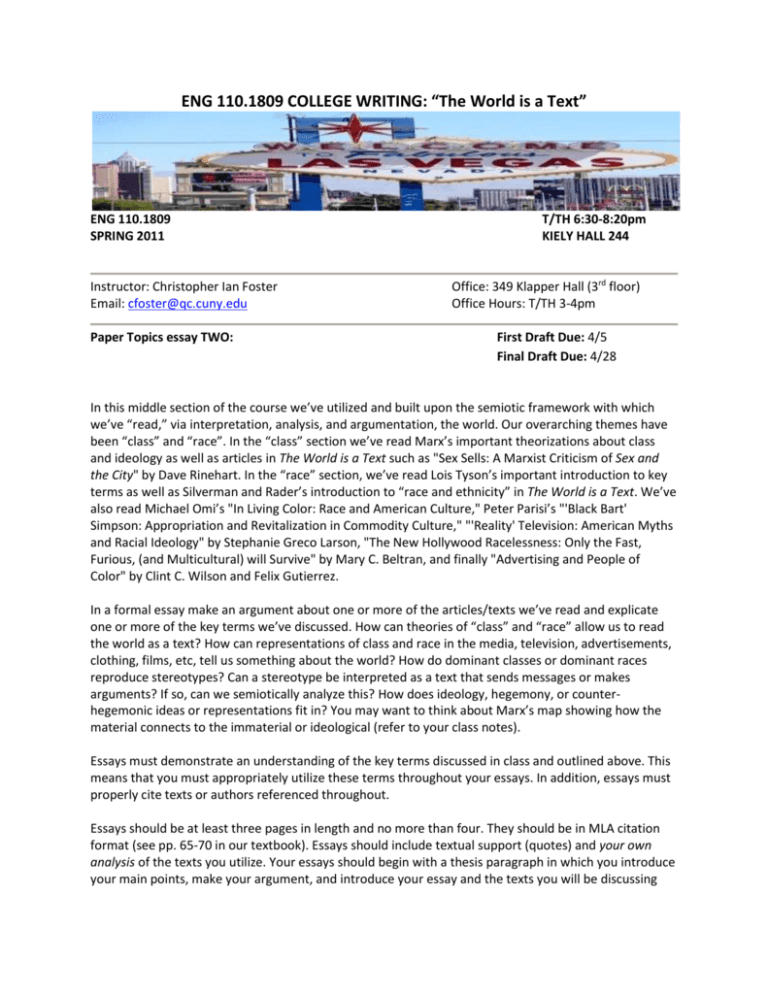
ENG 110.1809 COLLEGE WRITING: “The World is a Text” ENG 110.1809 SPRING 2011 Instructor: Christopher Ian Foster Email: cfoster@qc.cuny.edu Paper Topics essay TWO: T/TH 6:30-8:20pm KIELY HALL 244 Office: 349 Klapper Hall (3rd floor) Office Hours: T/TH 3-4pm First Draft Due: 4/5 Final Draft Due: 4/28 In this middle section of the course we’ve utilized and built upon the semiotic framework with which we’ve “read,” via interpretation, analysis, and argumentation, the world. Our overarching themes have been “class” and “race”. In the “class” section we’ve read Marx’s important theorizations about class and ideology as well as articles in The World is a Text such as "Sex Sells: A Marxist Criticism of Sex and the City" by Dave Rinehart. In the “race” section, we’ve read Lois Tyson’s important introduction to key terms as well as Silverman and Rader’s introduction to “race and ethnicity” in The World is a Text. We’ve also read Michael Omi’s "In Living Color: Race and American Culture," Peter Parisi’s "'Black Bart' Simpson: Appropriation and Revitalization in Commodity Culture," "'Reality' Television: American Myths and Racial Ideology" by Stephanie Greco Larson, "The New Hollywood Racelessness: Only the Fast, Furious, (and Multicultural) will Survive" by Mary C. Beltran, and finally "Advertising and People of Color" by Clint C. Wilson and Felix Gutierrez. In a formal essay make an argument about one or more of the articles/texts we’ve read and explicate one or more of the key terms we’ve discussed. How can theories of “class” and “race” allow us to read the world as a text? How can representations of class and race in the media, television, advertisements, clothing, films, etc, tell us something about the world? How do dominant classes or dominant races reproduce stereotypes? Can a stereotype be interpreted as a text that sends messages or makes arguments? If so, can we semiotically analyze this? How does ideology, hegemony, or counterhegemonic ideas or representations fit in? You may want to think about Marx’s map showing how the material connects to the immaterial or ideological (refer to your class notes). Essays must demonstrate an understanding of the key terms discussed in class and outlined above. This means that you must appropriately utilize these terms throughout your essays. In addition, essays must properly cite texts or authors referenced throughout. Essays should be at least three pages in length and no more than four. They should be in MLA citation format (see pp. 65-70 in our textbook). Essays should include textual support (quotes) and your own analysis of the texts you utilize. Your essays should begin with a thesis paragraph in which you introduce your main points, make your argument, and introduce your essay and the texts you will be discussing (see pp. 30-40 in our textbook). Subsequently, include 4-6 body paragraphs and a conclusion. Essays should be titled and in Times New Roman size 12 font. Finally, you must include ONE OUSTSIDE SOURCE and a work cited page located at the end of your essay. An outside source is a text (book, book chapter, scholarly article, online scholarly journal article, encyclopedia article) that we have not read in class. This means you’ll need to do some outside research. We’ll get a chance to work on this in our library visit on 3/31. Valid scholarly sources DO NOT INCLUDE: Wikipedia, online dictionaries, anything you find on Google.com (unless you use “Google Scholar”). Use the Queens College Library website to begin research. Work Cited Page (See Owl, Purdue Online Writing Lab for more info: http://owl.english.purdue.edu/owl/resource/747/06/) Book with More Than One Author The first given name appears in last name, first name format; subsequent author names appear in first name last name format. Gillespie, Paula, and Neal Lerner. The Allyn and Bacon Guide to Peer Tutoring. Boston: Allyn, 2000. Print. A Work in an Anthology, Reference, or Collection Works may include an essay in an edited collection or anthology, or a chapter of a book. The basic form is for this sort of citation is as follows: Lastname, First name. "Title of Essay." Title of Collection. Ed. Editor's Name(s). Place of Publication: Publisher, Year. Page range of entry. Medium of Publication. Article in a Reference Book (e.g. Encyclopedias, Dictionaries) For entries in encyclopedias, dictionaries, and other reference works, cite the piece as you would any other work in a collection but do not include the publisher information. Also, if the reference book is organized alphabetically, as most are, do not list the volume or the page number of the article or item. "Ideology." The American Heritage Dictionary. 3rd ed. 1997. Print.


